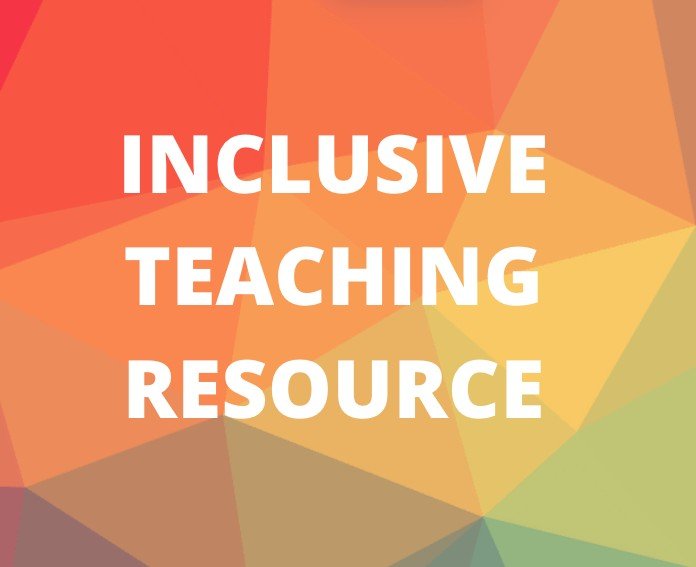Instructional Content
Instructional Content
Instructional Content
"Instructional Content" refers to the content of a course, including textbooks, assigned readings & other media, modules, topics, lessons, and more. This section of the ITR invites you to consider how you might make the content of your course—no matter the discipline—inclusive for a wide range of students.
You might browse the content below, or use the following table of contents to navigate to a particular suggested practice.
Diverse Representation
Provide ways for students to see themselves reflected in the discipline and to see “experts” in the field from many backgrounds.
Explanation and/or Examples
Use texts, videos, graphics, speakers, etc. to represent people from many backgrounds in varied roles.
Highlight the contributions from historically under-represented minorities in the field.
Include readings from authors with various backgrounds and perspectives.
Resource
“ (Curated list)
Social Impact within and Beyond the Field
Highlight how course concepts/principles are relevant to different types of communities and, where appropriate, acknowledge the (historical) marginalization of various groups and its impact on the field.
Explanation and/or Examples
Use data to demonstrate how a particular concept or principle has not been applied equitably. For example:
- The unequal effects of pollution on underserved groups
- Resource allocation for public schools in rural areas or areas serving underrepresented minority groups
Apply course principles within a variety of social arenas.
Acknowledge indigenous knowledge and practices that influence course concepts.
Reflect with the class on whose voices are or are not represented in scholarly literature and other conversations on a given topic.
Resources
Inclusive Citation, Andrea Baer, Rowan University Libraries (Library Research Guide)
Allowance for Prior Knowledge
Present course content so that objectives are attainable by students with varied prior knowledge.
Explanation and/or Examples
Define discipline specific vocabulary (Jargon) within the course materials.
Resources
TILT Higher Ed Examples and Resources, Transparency in Learning and Teaching Project (Website)
Accessible Content
Present course content so that objectives are attainable by students with varied prior knowledge.
Explanation and/or Examples
Define discipline specific vocabulary (Jargon) within the course materials.
Resources
TILT Higher Ed Examples and Resources, Transparency in Learning and Teaching Project (Website)
Affordable Materials
Keep course materials affordable.
Explanation and/or Examples
Integrate recommendations of the Rowan Affordability Taskforce.
Resources
Create an Affordably-Minded Class, Rowan University Student Success Programs (Website)
Student Agency Regarding Sensitive Topics
Make space for student voice in determining course topics and/or content.
Explanation and/or Examples
Design course assignments and activities in ways that enable student choice.
Provide content warnings in the syllabus, assignment sheets, and verbally when introducing sensitive content. The science on the efficacy of content warnings is mixed, but students may expect the warnings.
Offer alternative assignments for students who are not safely able to interact with certain course topics.
Give students a confidential way to communicate any topics for which content warnings would be essential for their emotional safety.
Resources
An Introduction to Content Warnings and Trigger Warnings, Inclusive Teaching, University of Michigan (Website)
Recognizing Bias
Encourage students to consider the source of course content, including its contexts and any inherent biases.
Explanation and/or Examples
Recognize when authoritative voices are from historically dominant perspectives, where appropriate.
Help students identify counternarratives or alternative perspectives from historically marginalized communities.
Resources
5 Steps to Take as an Antiracist Data Scientist, Emily Hadley (Web article)
Inclusive Research and Citation Practices
Encourage students to seek a range of perspectives and types of information sources in their research.
Explanation and/or Examples
When teaching about source-based research, recognize in research instruction that search engines, and academic databases, and other search tools are not politically neutral spaces.
Support students in treating diverse perspectives with care throughout the research process.
Resources
Inclusive Citation, Andrea Baer, Rowan University Libraries (Library Research Guide)
Click Restraint for Critical Online Source Evaluation, Andrea Baer and Dan Kipnis (Conference presentation)

Inclusive Teaching Resource
Return to the Inclusive Teaching Resource homepage.

Teaching Practices

Culture of the Classroom

Policy
Visit the Policy section to learn more about designing inclusive and equitable classroom policies.

Assessment
Visit the Assessment section to learn about grading contracts, instructional alignment, and more recommendations for equitable grading and assessment practices.

Resources
Visit our curated list of resources to support inclusive teaching practices.
